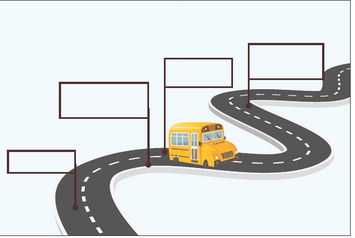DRIPPING SPRINGS — After securing feedback from those within the school district and community stakeholders, Dripping Springs ISD has launched its new strategic plan, titled Future Ready 2030, in the fall of 2024.
In addition to charting the course of the school district for the next five years, the plan will also guide students to graduate with academic, interpersonal and technical skills and equip them to be able to innovate and problem-solve in diverse environments. Beginning in 2023, community members, students and staff reviewed stakeholder input, student outcomes, survey data and market trends to develop a forward-looking strategic plan built on the community’s values.
“We were really focused on finding out what our community wanted out of our schools and then laying out some strategic focuses to try and align what we're doing within the district to match what our community expectations were and to set a plan that charts our course for our dreams for our kids for the next three to five years,” explained DSISD Superintendent Dr. Holly Morris-Kuentz Within the plan, the learner outcomes state that each student will:
• Be challenged and encouraged to take risks and embrace failure as a part of learning.
• Possess the skills to communicate effectively through a variety of mediums.
• Be prepared to apply critical thinking and creativity to solve realworld problems.
• Be a conscientious citizen, who is safe, respectful and responsible.
Future Ready 2030 also has four key focus areas: • Curriculum and Academics: Ensure students possess the skills to confidently solve problems, communicate effectively, adapt, lead and innovate to be prepared for their future.

GRAPHIC BY MEGAN NAVARRO The four strategic focus areas of Dripping Springs ISD’s new strategic plan, titled Future 2030.
• Guidance Counseling, Student Growth and Well-Being: Create pathways for access to resources and programs for all students to support their personal wellbeing and growth.
• Recruit and Hire, Develop and Retain: Strategically recruit, hire, develop and retain quality staff who can effectively fulfill our highest hopes for our students.
• Communication and Family & Community Engagement: Enhance and align communication and engagement strategies to build and support relationships with families, businesses and our community.
“The first area was really that academic focus, making sure that our students have the skills that they need to be effective and be prepared for their future.
The second focus area was making sure that students and teachers have resources, programming and access. And then, the third area was around our employees and making sure that other organizations were strategically hiring, developing and supporting our staff,” Morris-Kuentz said. “Then, the last area with communication, really because we have over 8,700 [students] in our district and their families. Making sure that we have really great communication and that we're engaging families, businesses and community members to be a part of our district.”
The district has a series of objectives that it will continue to work on. The four focus areas in the strategic plan fall into a couple of different departments, the superintendent said, so those will work on building each specific part of their plan to meet those needs.
The process of designing Future 2030 was community-centric, Morris-Kuentz explained, including involving the young generation that it would affect the most. “It started by the community engagement survey, so we sent a survey out districtwide, [which] included students, teachers, parents, staff and then, the community at large, to find out what they were looking for in the district's future. We also have running, at that same time, what we call Community Summit and in those summits, we had student panels and so, our students were participating in sharing their experiences in our school district with families and community members who were interested in attending those,” she said.
“We were sharing that information out from the kids’ perspective and kind of giving students a voice to their school experience and then getting feedback after that. We also ran a series of focus groups. We had those groups with students, focus groups with teachers and principals and then parents, and then other districts have a large one of campus staff and then community members, so that we were looking at all of our different stakeholders in the Dripping Springs area and getting a good cross-section of what people felt like was important for school districts.”
Ultimately, the strategic plan is built on an understanding between the school district and the community. Morris-Kuentz said that the plan makes sure that the things DSISD is focused on and working on are a match for what the community wants for the kids.
Components of Future 2030, the plan’s brochure and continuous updates can be found at www.dsisdtx.us/futureready2030.









